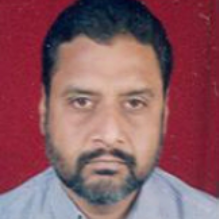International Journal of Information Technology and Computer Science (IJITCS)
IJITCS Vol. 4, No. 10, 8 Sep. 2012
Cover page and Table of Contents: PDF (size: 968KB)
MIMO Capacity Analysis Using Adaptive Semi Blind Channel Estimation with Modified Precoder and Decoder for Time Varying Spatial Channel
Full Text (PDF, 968KB), PP.1-18
Views: 0 Downloads: 0
Author(s)
Index Terms
MIMO Capacity, Blind Channel Estimation, Semiblind Channel Estimation, Partial CSI, Spatial Channel
Abstract
Multiple Input Multiple Output(MIMO) has been in much importance in recent past because of high capacity gain over a single antenna system. In this article, analysis over the capacity of the MIMO channel systems with spatial channel with modified precoder and decoder has been considered when the channel state information (CSI) is considered partial. Due to delay in acquiring transmitted information at the receiver end, the time selective fading wireless channel often induces incomplete or partial CSI. The dynamic CSI model has also been implemented consisting channel mean and covariance which leads to extracting of channel estimates and error covariance which then further applied with the modified precoder and decoder utilizing both the parameters indicating the CSI quality since these are the functions of temporal correlation factor, and based on this, the model covers data from perfect to statistical CSI, either partially or fully blind. It is found that in case of partial and imperfect CSI, the capacity depends on the statistical properties of the error in the CSI which has been manipulated according to the precoder and decoder conditions.
Based on the knowledge of statistical distribution of the deviations in CSI knowledge, a new approach which maximizes the capacity of spatial channel model with modified precoder and decoder has been tried. The interference then interactively reduced by employing the iterative channel estimation and data detection approach, where by utilizing the detected symbols from the previous iteration, multiuser/MIMO channel estimation and symbol detection is improved.
Cite This Paper
Ravi kumar, Rajiv Saxena, "MIMO Capacity Analysis Using Adaptive Semi Blind Channel Estimation with Modified Precoder and Decoder for Time Varying Spatial Channel", International Journal of Information Technology and Computer Science(IJITCS), vol.4, no.10, pp.1-18, 2012. DOI:10.5815/ijitcs.2012.10.01
Reference
[1]G. J. Foschini, "Layered space-time architecture for wireless communication in a fading environment when using multi-element antennas," Bell Labs Technical Journal, vol. 1, pp. 41-59, 1996.
[2]I. Barhumi, G. Leus, and M. Moonen, "Optimal training design for MIMO OFDM systems in mobile wireless channels," IEEE Trans. Signal Process., vol. 51, pp. 1615-1624, 2003.
[3]D. Schafhuber, G. Matz, and F. Hlawatsch, "Adaptive Wiener filters for time-varying channel estimation in wireless OFDM systems," IEEE International Conference on Acoustics, Speech, and Signal Processing, 2003. Proceedings. (ICASSP '03). 2003, 2003, pp. IV-688-91 vol.4.
[4]R. Kumar and R. Saxena, "Capacity Analysis of MIMO Spatial Channel Model using Novel Adaptive Semi Blind Estimation Scheme," Journal of Wireless Networking and Communications, vol. 2 No.4, 2012.
[5]M. J. Gans, "A power-spectral theory of propagation in the mobile-radio environment," IEEE Transactions on Vehicular Technology, , vol. 21, pp. 27-38, 1972.
[6]T.S.Rappaport, Ed., Wireless Communications:Principles & Practice. Saddleriver, NJ: Prentice Hall PTR, 1996.
[7]P.Zetterberg and B.Ottersten, "The Spectrum Efficiency of a Basestation Antenna Array System for Spatially Selective Transmission," in IEEE VTC, 1994.
[8]E. Karami and M. Shiva, "Decision-Directed Recursive Least Squares MIMO Channels Tracking," EURASIP Journal of Wireless Commun. Networking, pp. 1-10, 2006.
[9]E. Telatar, "Capacity of multi-antenna Gaussian channels," Bell Labs Technical Memorandum, June 1995.
[10]S. N. Diggavi and T. M. Cover, "The worst additive noise under a covariance constraint," IEEE Transactions on Information Theory, x, vol. 47, pp. 3072-3081, 2001.
[11]S. Boyd, S. Vishwanath, and A. J. Goldsmith, "worst-case capacity of Gaussian Channel Vectors," 2002.
[12]E. Visotsky and U. Madhow, "Space-time transmit precoding with imperfect feedback," IEEE Transactions on Information Theory, , vol. 47, pp. 2632-2639, 2001.
[13]A. F. Molisch, M. Steinbauer, M. Toeltsch, E. Bonek, and R. S. Thoma, "Capacity of MIMO systems based on measured wireless channels," IEEE Journal on Selected Areas in Communications, , vol. 20, pp. 561-569, 2002.
[14]A. Moustakas and S. Simon, "Optimizing multi-transmitter single-receiver (miso) antenna systems with partial channel knowledge."
[15]S. A. Jafar and A. Goldsmith, "Transmitter optimization and optimality of beamforming for multiple antenna systems," IEEE Transactions on Wireless Communications, , vol. 3, pp. 1165-1175, 2004.
[16]S. A. Jafar and A. J. Goldsmith, "On optimality of beamforming for multiple antenna systems with imperfect feedback," in Proceedings of Int. Symp. Inf. Theory, June 2001, p. 321.
[17]S. A. Jafar, V. Sriram, and A. Goldsmith, "Channel capacity and beamforming for multiple transmit and receive antennas with covariance feedback," in IEEE International Conference on Communications, 2001. ICC 2001., 2001, pp. 2266-2270 vol.7.
[18]E. A. Jorswieck and H. Boche, "Optimal Transmission with Imperfect Channel State Information at the Transmit Antenna Array," Wireless Personal Communications, vol. 27, pp. 33-56, 2003.
[19]E. A. Jorswieck and H. Boche, "Channel capacity and capacity-range of beamforming in MIMO wireless systems under correlated fading with covariance feedback," IEEE Transactions on Wireless Communications, , vol. 3, pp. 1543-1553, 2004.
[20]S. Simon and A. Moustakas, "Optimizing MIMO antenna systems with channel covariance feedback."
[21]G. J. Foschini and M. J. Gans, "On limits of wireless communications in a fading environment when using multiple antennas," Wireless Personal Communications, vol. 6, pp. 311-335, 1998.
[22]A. Narula, M. J. Lopez, M. D. Trott, and G. W. Wornell, "Efficient use of side information in multiple-antenna data transmission over fading channels," IEEE Journal on Selected Areas in Communications, , vol. 16, pp. 1423-1436, 1998.
[23]T. L. Marzetta and B. M. Hochwald, "Capacity of a mobile multiple-antenna communication link in Rayleigh flat fading," IEEE Transactions on Information Theory, , vol. 45, pp. 139-157, 1999.
[24]Z. Lizhong and D. N. C. Tse, "Communication on the Grassmann manifold: a geometric approach to the noncoherent multiple-antenna channel," IEEE Transactions on Information Theory, , vol. 48, pp. 359-383, 2002.
[25]A. Lapidoth and S. M. Moser, "Capacity bounds via duality with applications to multiple-antenna systems on flat-fading channels," IEEE Transactions on Information Theory, , vol. 49, pp. 2426-2467, 2003.
[26]T. Cui and C. Tellambura, "Semiblind Channel Estimation and Data Detection for OFDM Systems With Optimal Pilot Design," IEEE Transactions on Communications, , vol. 55, pp. 1053-1062, 2007.
[27]W. Feng, W. P. Zhu, and M. N. S. Swamy, "A Semiblind Channel Estimation Approach for MIMO OFDM Systems," IEEE Transactions on Signal Processing, , vol. 56, pp. 2821-2834, 2008.
[28]M. Abuthinien, S. Chen, and L. Hanzo, "Semi-blind Joint Maximum Likelihood Channel Estimation and Data Detection for MIMO Systems," IEEE Signal Processing Letters, vol. 15, pp. 202-205, 2008.
[29]M. A. Khalighi and S. Bourennane, "Semiblind Single-Carrier MIMO Channel Estimation Using Overlay Pilots," IEEE Transactions on Vehicular Technology, vol. 57, pp. 1951-1956, 2008.
[30]Y. Jung-Lang and L. Yin-Cheng, "Space-Time-Coded MIMO ZP-OFDM Systems: Semiblind Channel Estimation and Equalization," IEEE Transactions on Circuits and Systems I: Regular Papers, vol. 56, pp. 1360-1372, 2009.
[31]C. Yi-Sheng, "Semiblind Channel Estimation for MIMO Single Carrier With Frequency-Domain Equalization Systems," IEEE Transactions on Vehicular Technology, vol. 59, pp. 53-62, 2010.
[32]W. Feng, Z. Wei-Ping, and M. N. S. Swamy, "Semiblind Sparse Channel Estimation for MIMO-OFDM Systems," IEEE Transactions on Vehicular Technology, vol. 60, pp. 2569-2582, 2011.
[33]K. Kyeong Jin, T. A. Tsiftsis, and R. Schober, "Semiblind Iterative Receiver for Coded MIMO-OFDM Systems," IEEE Transactions on Vehicular Technology, vol. 60, pp. 3156-3168, 2011.
[34]S. A. Jafar and A. Goldsmith, "Multiple-antenna capacity in correlated Rayleigh fading with channel covariance information," IEEE Transactions on Wireless Communications, vol. 4, pp. 990-997, 2005.
[35]S. Da-Shan, G. J. Foschini, M. J. Gans, and J. M. Kahn, "Fading correlation and its effect on the capacity of multielement antenna systems," IEEE Transactions on Communications, vol. 48, pp. 502-513, 2000.
[36]L. Musavian, M. R. Nakhai, M. Dohler, and A. H. Aghvami, "Effect of Channel Uncertainty on the Mutual Information of MIMO Fading Channels," IEEE Transactions on Vehicular Technology, vol. 56, pp. 2798-2806, 2007.
[37]B. Hassibi and B. M. Hochwald, "How much training is needed in multiple-antenna wireless links?," IEEE Transactions on Information Theory, vol. 49, pp. 951-963, 2003.
[38]C. B. Papadias, "Unsupervised receiver processing techniques for linear space-time equalization of wideband multiple input / multiple output channels," IEEE Transactions on Signal Processing, vol. 52, pp. 472-482, 2004.
[39]G. Caire and S. Shamai, "On the capacity of some channels with channel state information," IEEE Transactions on Information Theory, vol. 45, pp. 2007-2019, 1999.
[40]A.Paulraj, R.Nabar, and D.Gore. (2003). Introduction to space time wireless communications.
[41]D. Minhua and S. D. Blostein, "MIMO Minimum Total MSE Transceiver Design With Imperfect CSI at Both Ends," IEEE Transactions on Signal Processing, vol. 57, pp. 1141-1150, 2009.
[42]S. M. Kay. (1993). Fundamentals of Statistical Processing: Estimation Theory. 1.
[43]D.P.Bertsekas. (1999). Non Linear Programming.
[44]H. Sampath, P. Stoica, and A. Paulraj, "Generalized linear precoder and decoder design for MIMO channels using the weighted MMSE criterion," IEEE Transactions on Communications, vol. 49, pp. 2198-2206, 2001.
[45]I. Sohn, J. G. Andrews, and L. Kwang Bok, "MIMO Broadcast Channels with Spatial Heterogeneity," IEEE Transactions on Wireless Communications, vol. 9, pp. 2449-2454, 2010.
[46]N. Jindal, "MIMO Broadcast Channels With Finite-Rate Feedback," IEEE Transactions on Information Theory, vol. 52, pp. 5045-5060, 2006.
[47]Y. Taesang, N. Jindal, and A. Goldsmith, "Multi-Antenna Downlink Channels with Limited Feedback and User Selection," IEEE Journal on Selected Areas in Communications, vol. 25, pp. 1478-1491, 2007.
[48]M. Vu and A. Paulraj, "Capacity optimization for Rician correlated MIMO wireless channels," in Conference Record of the Thirty-Ninth Asilomar Conference on Signals, Systems and Computers, 2005., 2005, pp. 133-138.

